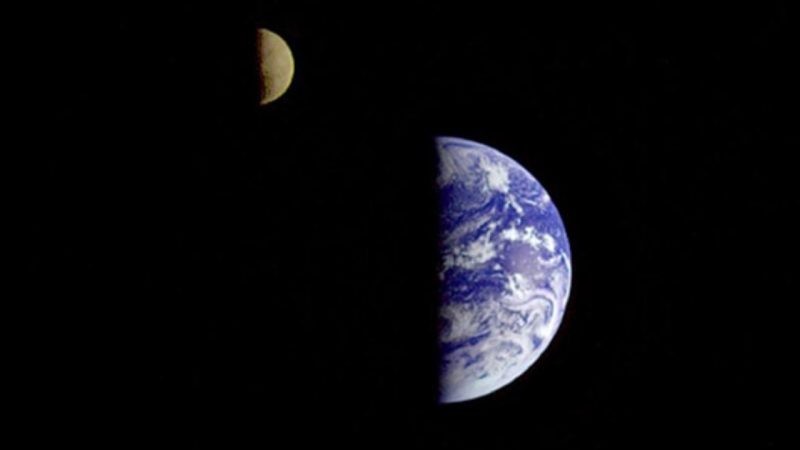Have you ever stopped to consider just how fast the Earth is moving? Our planet is constantly spinning, carrying us all along for the ride. Every single day, we complete a full rotation, experiencing sunrise and sunset thanks to this continuous motion. But how fast does the Earth actually rotate, and why don’t we feel this incredible speed?
The Surprising Speed of Earth’s Rotation
The Earth’s rotation is what gives us day and night. Imagine standing at the equator, the widest part of our planet. As the Earth spins on its axis, you’re traveling at an astonishing speed of approximately 1,000 miles per hour (1,600 kilometers per hour). That’s faster than the speed of sound! To put it in perspective, a commercial jet typically cruises at around 500 miles per hour, meaning you’re spinning twice as fast as a jet plane just by standing still on Earth’s equator.
This speed is due to the Earth’s circumference. To complete a full 360-degree rotation in roughly 24 hours, points on the equator must cover a great distance quickly. However, this rotational speed isn’t uniform across the globe. As you move towards the North or South Pole, the distance you need to travel in a 24-hour period decreases, and therefore, the speed of rotation also decreases. At the poles themselves, the speed is virtually zero – you would simply be spinning in place!
Why Don’t We Feel This Incredible Speed?
With such a high speed of rotation, it seems counterintuitive that we don’t feel like we’re constantly spinning. The reason lies in the concept of inertia and the constant velocity of Earth’s rotation.
Think about being in a car or an airplane moving at a constant speed on a smooth journey. When the ride is smooth and the speed is steady, you might almost forget you’re moving at all. You don’t feel pushed back in your seat unless the vehicle accelerates, decelerates, or turns. Similarly, Earth’s rotation is incredibly consistent. It doesn’t suddenly speed up or slow down in a way that we would perceive in our daily lives.
The Galileo spacecraft captured this image of the Earth and moon in 1992. Ancient astronomers discovered Earth’s spin by studying the motions in the sky. Image via NASA.
Everything on Earth, including us, the atmosphere, and the oceans, is moving along with the planet at this constant rotational speed. We are in motion, but because our motion is consistent and we are moving along with everything around us, we don’t feel the spin. It’s similar to the coffee in your cup on a smooth airplane flight – it doesn’t fly backward because everything, including the coffee, cup, and plane, are moving at the same speed.
However, if Earth’s rotation were to abruptly change speed, we would definitely feel it. Imagine the sensation of suddenly slamming on the brakes in a fast-moving car – that’s the kind of force we would experience if Earth’s rotation drastically changed.
How Did We Discover Earth’s Rotation?
For centuries, humans were unaware of Earth’s rotation. Looking at the sky, it appeared as though the sun, moon, and stars were moving around a stationary Earth. This geocentric view was the dominant model for understanding the cosmos for a long time.
Ancient astronomers, observing the consistent movement of celestial bodies, logically concluded that the heavens revolved around our planet. It was challenging to imagine the massive Earth itself was spinning because they couldn’t feel any such motion.
However, some early thinkers challenged this Earth-centered view. Notably, the Greek astronomer Aristarchus of Samos proposed a heliocentric model as early as the 3rd century BC, suggesting that the Earth and other planets revolve around the sun. This idea was centuries ahead of its time and didn’t gain widespread acceptance.
It wasn’t until the 16th century that Nicolaus Copernicus revived and developed the heliocentric model in detail. Copernicus’ work, along with observations and advancements in physics by scientists like Galileo Galilei and Isaac Newton, gradually convinced the scientific community that Earth indeed spins on its axis and orbits the sun.
One compelling visual proof of Earth’s rotation is the phenomenon of star trails. By taking long-exposure photographs of the night sky, you can capture the apparent motion of stars as arcs or trails around the celestial poles. This apparent movement is actually due to Earth’s rotation, which causes the stars to appear to move across the sky from our perspective on Earth.
View at EarthSky Community Photos. | Ragini Chaturvedi took this image of the night sky on January 6, 2022. Ragini wrote: “First good star trail image I have taken at Death Valley, California, in the vast, open, clear sky of endless bright twinkling stars. Those concentric circles around the focused and fixed North Star, Polaris, look good.” Yes, they do! Thanks, Ragini! Learn how to create photos of star trails with long exposures.
Conclusion: A Constant Spin
In conclusion, the Earth rotates at an impressive speed, especially at the equator, reaching approximately 1,000 miles per hour. We don’t feel this speed because the rotation is constant, and we are moving along with everything on Earth at this steady pace. Understanding Earth’s rotation has been a journey of scientific discovery, moving from ancient geocentric views to the modern heliocentric understanding, supported by observations and physics. So next time you see the sunrise or sunset, remember you are experiencing the effects of our planet’s continuous and surprisingly rapid spin!

